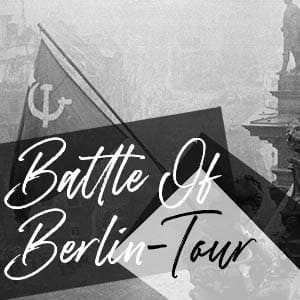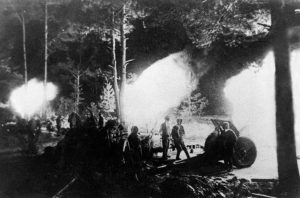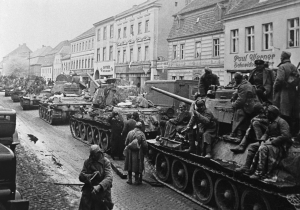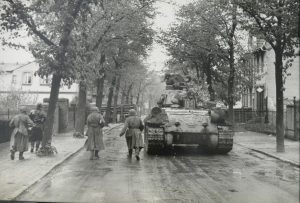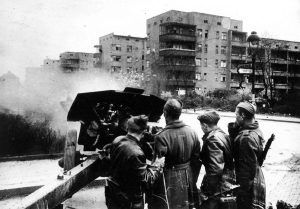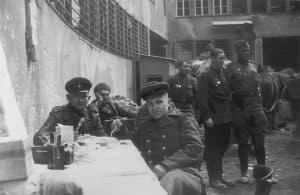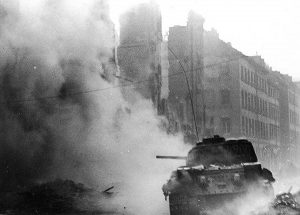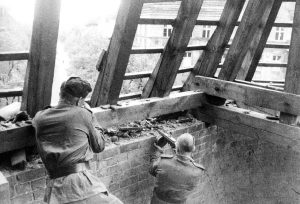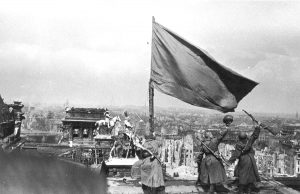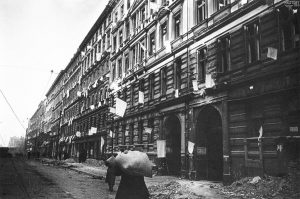“The enemy will be crushed along the shortest route to Berlin. The capital of Fascist Germany will be taken and the banner of victory planted over it.”
Soviet Marshal Georgy Zhukov
Commander of the 1st Belorussian Front
“So you have underestimated the enemy on the Berlin axis. I was thinking that you were already on the approaches to Berlin, but you’re still on the Seelow Heights. Things have started more successfully for Konev.”…”
Joseph Stalin
Addressing Soviet Marshal Georgy Zhukov on April 16th 1945
–
Berlin’s development from twin merchant settlements (Berlin and Cölln) to a medieval outpost in the ‘sandbox of the Holy Roman Empire’ and capital of one of Europe’s most powerful nations – Prussia – would see the city transformed in terms of trade, might, and prestige.
By the 20th century, its boundary would expand well beyond its medieval quarter to include the farmland and villages that previously dotted its periphery – with the Greater Berlin Act of 1920 providing the skeleton framework for the districts that still exist in the city today.
The topography of this once irrelevant settlement, however, has stayed largely the same. Extensive flatland, sandy soil, and a high water table.
Offering little in terms of natural defences.
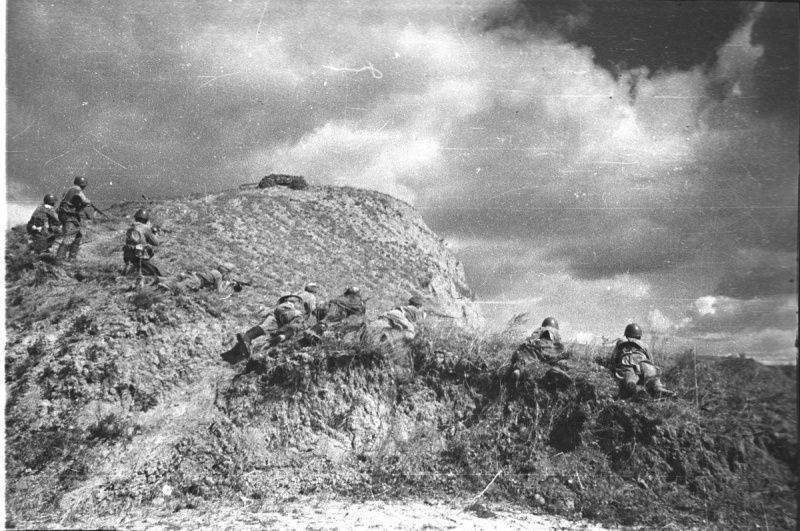
In 1945, the “Gates of Berlin” were not so much situated on the fortified outskirts of this city of millions – that had grown dense and rich during its time as the capital of the Imperial Kingdom of Prussia and cold and mean as the heart of Nazi Germany – but almost 90 km to the east, along the rivers Oder and Neisse.
It was on the hilly terrain just to the west of these two rivers, and the fluvial terraces and floodplains surrounding them, that the decisive confrontation before Soviet forces managed to clear a path directly to the Nazi capital would be fought.
Instead of choosing to reinforce the city and brace for a prolonged siege, troops available for the defence of Berlin were sent to hold the Oder-Neisse frontline, marshalled to fight a mighty battle to deny the Red Army access to not only the Nazi capital, but territory of the entire inner German Reich.
To be dealt a blow here, on the city’s eastern approaches, would likely make the fall of Berlin to the Soviet advance a foregone conclusion.
It would be a fight for the survival of the Thousand Year Reich.
Yet, while Hitler remained in Berlin in April 1945, he still believed that the main Soviet attack would be aimed at Prague and not Berlin. For as German Chancellor, Otto von Bismarck, famously said: “Whoever holds Prague holds Europe.”
To the Soviet forces gathered east of the city, the reality could not be clearer, as the Nazi party had in-fact learned in the course of its rise to power: whoever holds Berlin holds Germany.
For if the Coliseum falls, Rome falls with it.

Issuing a call to arms on April 16th, in typically bombastic language, Nazi leader Adolf Hitler would implore every soldier on the Eastern front to do his duty in fighting the Jewish Bolshevik arch-enemy. Stating: “In this hour the entire German nation looks to you, my soldiers in the east, and only hopes that by your fanaticism, by your arms and by your leadership, the Bolshevik onslaught is drowned in a blood bath.”
The earlier successes of the German Army, considered so spectacular at the time – defeating France in 46 days, pushing to the outskirts of Moscow in 1941 – could not have seemed more distant by 1945. With the shattered remnants of the previously unstoppable Nazi war machine now fighting a futile defensive campaign to halt the staggering might of the Soviet forces.
Of the Soviet Fronts (Army Groups) that would take part in the Berlin Strategic Offensive Operation (as it was known by the Soviets), the 1st Belorussian and 1st Ukrainian would spearhead the move on Berlin. Encircling the Nazi capital in a combined assault that would eventually extend from the Baltic coast to the border with Czechoslovakia.
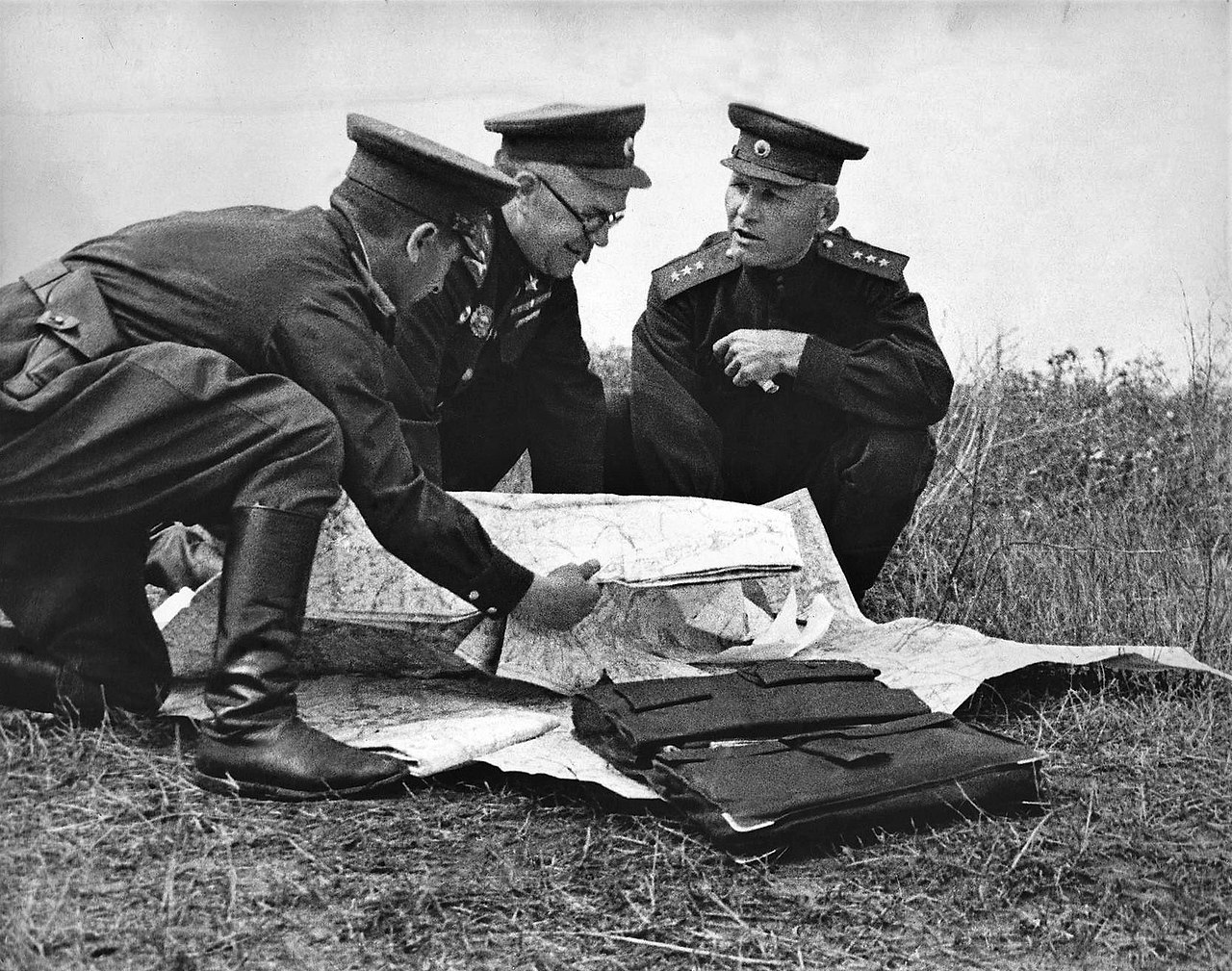
Two Soviet Marshals would be tasked with conquering the city:
- Marshal Georgy Zhukov – who had led the defense of Leningrad, Moscow, and Stalingrad – would serve as Stalin’s point man and head of the 1st Belorussian Front.
- Marshal Ivan Konev, head of the 1st Ukrainian Front, responsible for the liberation of Kiev, Odessa, and Kharkiv – and considered ruthless even by Stalin’s standards – would command the forces gathered on Zhukov’s left flank, pushing to the south of Berlin.
And in an additional supporting role, set to extend across the northern flank of the Soviet advance, were the forces of the 2nd Belorussian Front led by Polish Red Army Marshal, Konstantin Rokossovsky. Disgraced and imprisoned as a traitor in Stalin’s 1937 Great Purge, Rokossovsky had rehabilitated himself upon being released without explanation and allowed to return to army ranks in 1940. He would participate in almost every strategically important Soviet battle of the war, and oversee, with Zhukov, the biggest defeat in German military history – Operation Bagration.

By April 16th 1945, Zhukov’s mighty 1st Belorussian Front was positioned directly east of Berlin, having crossed the river Oder near Küstrin and secured a number of bridgeheads at the end of the Vistula-Oder campaign. The eastern German city of Frankfurt am Oder at that time remained in Nazi hands, with the bulk of Zhukov’s forces located further north – facing the entrenched defensive positions of the 9th Army, part of German Army Group Vistula, and led by General Theodor Busse – at the Seelow Heights.
Passing through the centre of this elevated terrain was the Reichstrassee 1 (now the B1 federal highway), which previously ran from the Dutch border near the city of Aachen to the distant Prussian city of Königsberg. Here, and directly opposite the strongest part of the defenses, were the 3rd and 5th Shock Army, the 47th Army, and 8th Guards. The latter having fought as victors at the Battle of Stalingrad – commanded by the man who had defended the city, Lieutenant General Vasily Chuikov.
Stalin would ensure that Chuikov’s 8th Guards would play a starring role in the capture of Berlin.
Troops of the Communist 1st Polish Army, and 61st Army would be positioned in the northern part of Zhukov’s formation, leading to the town of Schwedt.
Two huge tank armies – the 1st and 2nd Guard – would also lay in wait – as the infantry were first tasked with clearing the way.
The numbers would be skewed in favour of the attackers from the start:
- 768,100 Soviet troops in Zhukov’s sector facing just over 100,000 defenders
- 3,059 Soviet tanks in Zhukov’s sector vs the 587 under command of the 9th Army.
- 18,934 Soviet artillery pieces and mortars vs the 2,625 gathered by the 9th Army.

Further south, Ivan Konev’s 1st Ukrainian Front stood prepared with more than 500,000 men to confront the 4th Panzer Army, part of Army Group Centre, and led by Fritz-Hubert Gräser. After serving in Leningrad, Moscow, and Stalingrad the 4th Panzer had conducted a fighting withdrawal through Poland and finally been tasked with securing the defenses along the Lusatian Neisse River between Görlitz and Guben.
Konstantin Rokossovsky’s 2nd Belorussian Front of 300,000 men, to the north of Zhukov, would assist in controlling the right flank – having advanced into East Prussia and then across northern Poland to the mouth of the river Oder at Stettin. Rokossovsky would be tasked with moving against General Hasso von Manteuffel’s 3rd Panzer Army, part of German Army Group Vistula, to cut off reinforcements and aid the main breakthrough of Zhukov’s central push at the Seelow Heights.
All eyes were on Zhukov’s troops and his promise to Stalin that the Battle of Seelow Heights would be over by the end of the day.
His orders for April 16th, distributed as small leaflets handed man to man, were simple:
“The enemy will be crushed along the shortest route to Berlin. The capital of Fascist Germany will be taken and the banner of victory planted over it.”
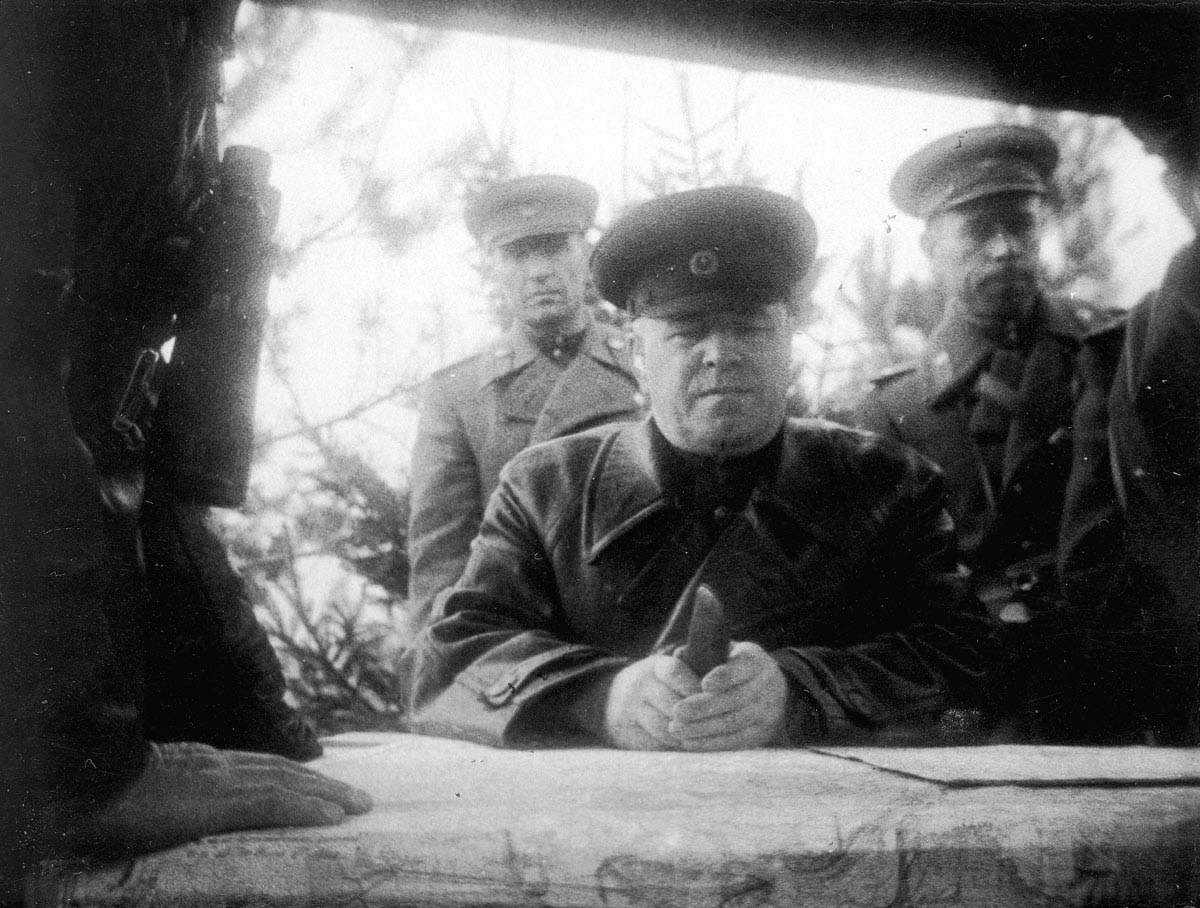
The son of a shoemaker, Zhukov was conscripted to serve in the Imperial Russian Army during the First World War and – after joining the Bolshevik cause early on, in 1917 – would serve in the cavalry during the Russian Civil War. However, the battle that had truly settled the trajectory of his career took place in 1939, against Japan’s Kwantung Army on the border between the Mongolian People’s Republic and the Japanese-controlled state of Manchukuo.
The future Marshal of the Soviet Union had been put in charge of the battered First Soviet Mongolian Army Group and tasked with directing the decisive battle in what is now known as the Soviet-Japanese Border War. Soviet forces had struggled to repel the Japanese assaults and Zhukov was called on to execute a successful counterattack.
Before engaging the Japanese forces, he ordered an intense artillery barrage accompanied by the Soviet air force’s first ever fighter-bombing operation to soften up resistance. Instead of confronting the Japanese head-on, Zhukov then sent tanks and infantry around the enemy flanks to encircle the forces and attack the rear supply areas.
A tactic which the German Wehrmacht would similarly turn into a deadly art with its operations from 1939 – executing rapid Blitzkrieg tactics with strong pincer movements and forcing enemy armies into cauldrons (Kessel) to be surrounded and annihilated.
It was in this way that the Soviet Union would lose more than 3 million men in 1941 – in the first six months of Operation Barbarossa.
In planning the defeat of the 9th Army on the Seelow Heights, the stocky and imposing Zhukov would meet with Stalin in Moscow on April 1st and be tasked with smashing his troops directly against the bulk of the Nazi forces – with Konev to the south moving forward his deep left hook to complete the encirclement of Berlin. Rokossovsky would be scheduled to join the fight to the north four days later, on April 20th, and maintain the right.
The operation would start on April 16th with Berlin set to fall on April 22nd – Lenin’s birthday.
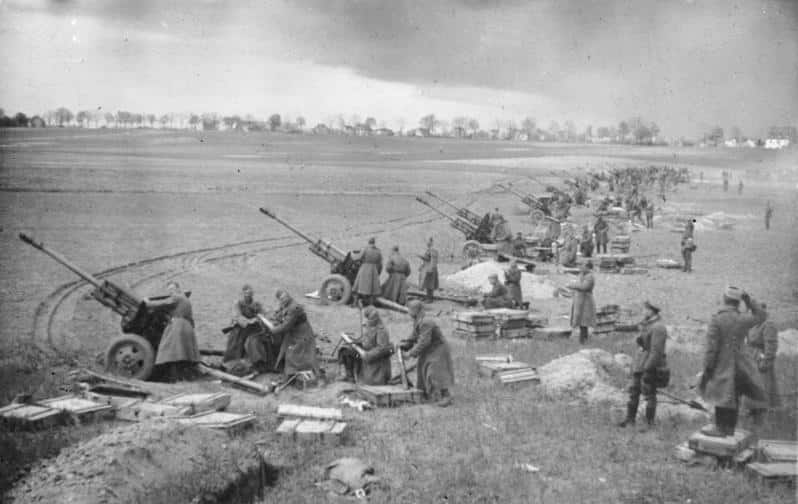
First an immense artillery barrage, followed by the main body of troops overrunning the German positions, then straight to Berlin.
The most direct line of attack and the shortest route to the city.
In the early hours of April 16th, under cover of darkness, the Berlin offensive started at Seelow Heights, as thousands of artillery pieces and Katyusha rocket launchers bombarded the defensive fortifications.
Zhukov’s 1st Belorussian Front attacked at 4am Berlin time, across the Oder, with Konev’s 1st Ukrainian Front crossing from the Neisse shortly afterwards.
The opening barrage during the Battle of the Seelow Heights would see some 9000 Soviet guns firing 500,000 shells in 30 minutes.
In comparison, the Battle of the Somme, the major British-French offensive in 1916 during the First World War – the largest battle on the Western Front – opened with an artillery barrage of a scale and ferocity unheard of before in human history. Over five days, 1,438 guns would fire 1.7m shells. At the rate of fire carried out at Seelow, Zhukov’s gunners could have exceeded that in less than two hours.
The British aim in 1916 had been to obliterate the enemy defenses with an intense bombardment that may well have enabled the troops to then simply walk through the devastated lines. The plan was betrayed to German interrogators – by two soldiers from Ulster.
The ground underneath the Somme is chalky. The German Army in 1916 had exploited this and prepared a series of deep dugouts for soldiers to hide in and avoid the British barrage. Although German casualties would eventually outweigh the British ones – the betrayal of the Somme plans and preparations made by the Germans would mean the British would advance less than 10km (6 miles). At a rate of more than 42,000 casualties for every kilometre taken. Losses on the first day were the worst in the history of the British Army, with 57,470 casualties, 19,240 of whom were killed.
Zhukov would similarly suffer from an over-optimistic reliance on artillery.
And a betrayal.

Facing the combined Soviet 1st Ukrainian Front on April 16th were troops serving under General Gotthard Heinrici, commander of Army Group Vistula. Dubbed Unser Giftzwerg (Our Poison Dwarf) by the men under his command, Heinrici was a highly decorated soldier who had served during the First World War at the Battle of Verdun.
Thanks to the capture and interrogation of a Soviet soldier south of Küstrin, Henrici would correctly predict not only Zhukov’s frontal assault but also the preparatory artillery barrage and his defensive strategy would be adjusted accordingly.
Like the German troops in 1916 at the Somme – Heinrici’s Army Group Vistula was prepared for Zhukov’s opening artillery barrage and had largely withdrawn to the second Hardenberg line of fortifications when the bombardment commenced. In an attempt to both reduce casualties to a minimum while also luring the Red Army into a false sense of security, deceived into thinking that losses on the heights would be higher.
Instead of holding the open plain, Heinrici had chosen to fortify the rising Seelow Heights – some 48 metres high overlooking the Oder and the advancing Soviet troops. A series of three defensive trench lines (the Hauptkampflinie (Front Line), Hardenberg-Stellung, and Wotan-Stellung) were established complete with bunkers and anti-tank ditches. These defensive fortifications would stretch across 10–15 mi (16–24 km) – and prove a formidable obstacle to Zhukov’s troops.
The land occupied by the Soviet forces following the Vistula-Oder campaign of early 1945, was also saturated by the spring thaw – German engineers would increase this hazard by releasing water from a reservoir upstream, which turned the plain into a swamp. Making the movement of tanks and mechanised units problematic and near impossible in parts. And seriously slowing down the Soviet advance.
The hastily shifted troops would maintain Heinrici’s second defensive line to engage in fighting – although then subject to the rolling barrages Red Army gunners would put down to try to cover the advancing troops – while German guns rained down their own fire on the attackers.
Red Army infantrymen would then need to manoeuvre across heavily cratered terrain to take the Hauptkampflinie – a further hindrance created by the impact of the hundreds of thousands of rounds fired at this focal point of Georgy Zhukov’s frontal push.
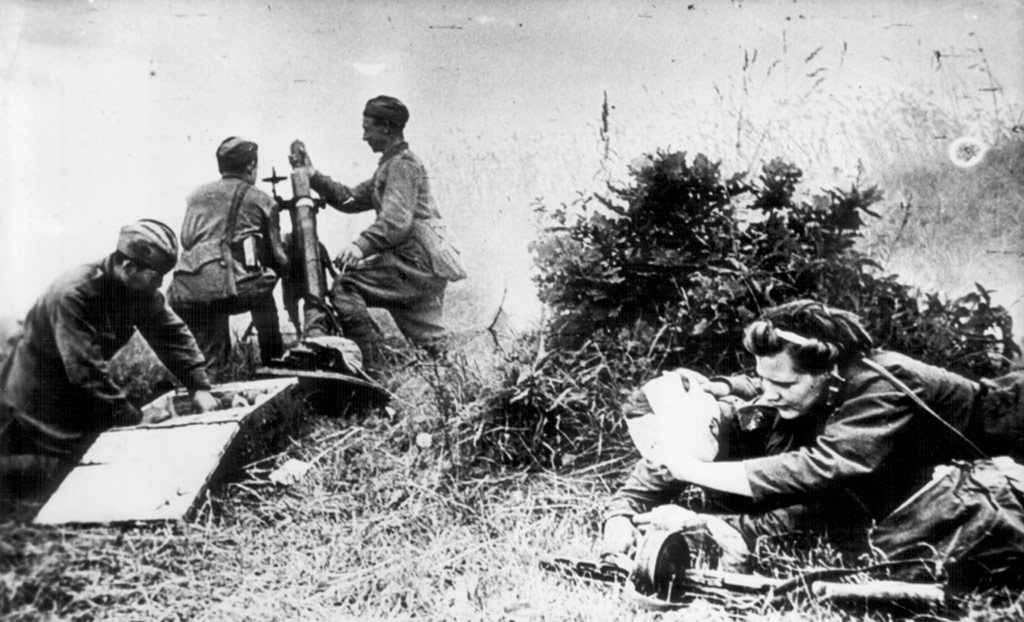
The Soviet Marshal’s attack was equally as methodical but would almost immediately fall apart.
Using high powered anti aircraft searchlights operated by female Red Army soldiers to illuminate the heights, Zhukov had hoped to aid the advance of his infantry. Certainly the effect was impressive: war correspondent Lieutenant Colonel Pavel Troyanoskii would describe the illumination of the Seelow Heights as like “a thousand suns joined together”. This, however, only served to backlight the troops and leave them easier to target as they moved across the swampy floodplain.
Three red signal flares fired into the sky signalled for the phalanx of searchlights on the Küstrin bridgehead to light up the battlefield.
The three green flares that followed would then call on Zhukov’s guns to pour a storm of fire onto the German positions.
As terrifying as this must have been for the defenders, it would have an additional effect on the attackers -the soldiers of the Red Army had learned to roar at the top of their voices to try to equalise the pressure when near formations of artillery yet many were left bleeding from their ears as the ground shook and a hot wind howled through the forests.
These were the men who had seen their villages and cities obliterated – their families murdered, their crops spoiled – with nothing but misery to return home to. Having travelled half a continent to reach the Oder, while the guns continued to belch flames, many moved forwards screaming at the sky and swarming across the river in whatever way they could. Some swimming, fully equipped, through the water. Accompanied by thousands of recently released prisoners – emaciated and bearing signs of torture at the hands of their German oppressors.
Now looking only for revenge.
Filling the ranks were also prisoners released from Soviet Gulag – offered the chance of a hero’s death instead of a ‘dog’s death for dogs’ in the prison system. Five of these prisoners would be awarded the status of Hero of the Soviet Union for their actions during the course of the war.
By the end of April 16th, Zhukov’s gunners would have used over 1,250,000 rounds on this first day alone. But his troops had only managed to advance some 8km in parts – reaching the villages of Trebbin in the north and Sachsendorf further south.
The Soviet Marshal had promised Stalin that he would take the Seelow Heights within the day and the troops of the 1st Belorussian had only made it as far as the 1st line of defensive fortifications – and with heavy losses. The 1st Polish army did manage to cross the Oder near Güstebiese (today Gozdowice) but would remain tied up in fighting there for two more days as the entire front stalled.
On hearing of the limited movement of his front echelon troops, Zhukov decided to commit his tank armies to the fight just after midday, although they were not scheduled to be brought up until the Seelow Heights had been seized. The 1st and 2nd Tank Guard Armies would be ordered to move up to the front in the afternoon – causing chaos for the traffic controllers tasked with ensuring an orderly movement across the bridgeheads.
Despite the hopeless position of the German 9th Army on April 16th, its forces were still holding nearly everywhere.

Two hours after the artillery bombing of the Seelow Heights began, Ivan Konev’s 1st Ukrainian Front started its attack on the German 4th Panzer army – between Guben and Görlitz. Unlike the troops of the 1st Belorussian Front further north, these soldiers had no bridgeheads established before the battle to cross to the west bank.
Unlike Zhukov, Konev would choose to lay a smoke screen to obscure the battlefield – rather than use searchlights to illuminate it. The cover would be laid over a distance almost four times as long as the front he would advance on, aiming to confuse the German forces as to where his attack would come from. Unlike Zhukov’s artillery barrage, Konev would choose to focus his fire on preselected targets – rather than rely on saturation fire. Methodically chopping through enemy strongpoints and blasting paths through the German positions that his assault troops and tanks could use to advance.
Having ordered a rapid assault across the river Neisse at more than 150 places, Konev then hoped to smother the enemy by pushing armoured divisions into the attack the moment that footholds were established. A tactic that would take him closer to Berlin than his Soviet rival Zhukov.
As – although Konev had not been tasked with taking the city – he hoped the swift movement of his forces would ensure his role in its fall. A fact that Stalin would focus on the next day while stoking the competition between the two Soviet Marshals to see who would be the first to claim the prize of capturing the Nazi capital.
–
Back at his command post, Army Group Vistula leader, Gotthard Heinrici would address his anxious staff officers, advising that the situation looked bleak.
“They cannot hold out much longer,” he said. “The men are so exhausted that their tongues are hanging out.”
Reporting to his superior, General Hans Krebs, afterwards he would concede that: “considering the size of the attack, we have not lost much ground.” While cautiously adding: “(But) I have learned never to praise the day until the twilight comes.”
He need not have worried much, shortly before midnight, tanks of the Soviet 1st Guards Army managed to capture the first three houses in the northern suburbs of the town of Seelow.
But the bulk of the Soviet forces on Zhukov’s 1st Belorussian Front would remain stalled – at least for the time being.
**
Our Related Tours
Want to learn more about the Battle of Berlin? Check out our Battle of Berlin tours to explore what remains of this important urban battlefield.
To learn more about the history of Nazi Germany and life in Hitler’s Third Reich, have a look at our Capital Of Tyranny tours.
Bibliography
Beevor, Antony (2003) Berlin: The Downfall 1945 | ISBN 978-0-14-028696-0
Hamilton, Aaron Stephan (2020) Bloody Streets: The Soviet Assault On Berlin | ISBN-13 : 978-1912866137
Kershaw, Ian (2001) Hitler, 1936–1945: Nemesis | ISBN 0-393-04994-9
Le Tissier, Tony (2010) Race for the Reichstag: the 1945 Battle for Berlin | ISBN: 978-1848842304
Le Tissier, Tony(2019) SS Charlemagne: The 33rd Waffen-Grenadier Division of the SS | ISBN: 978-1526756640
Mayo, Jonathan (2016) Hitler’s Last Day: Minute by Minute | ISBN: 978-1780722337
McCormack, David (2017) The Berlin 1945 Battlefield Guide Part I the Battle of the Oder-Neisse | ISBN: 978-1781556078
McCormack, David (2019) The Berlin 1945 Battlefield Guide Part II The Battle of Berlin | ISBN: 978-1781557396
Moorhouse, Roger (2010) Berlin at War | ISBN: 978-0465028559
Ryan, Cornelius (1966) The Last Battle | ISBN 978-0-671-40640-0
Sandner, Harald (2019) Hitler – Das Itinerar, Band IV (Taschenbuch): Aufenthaltsorte und Reisen von 1889 bis 1945 – Band IV: 1940 bis 1945 | ISBN: 978-3957231581
Shirer, William L. The Rise and Fall of the Third Reich | ISBN 978-1451651683.

